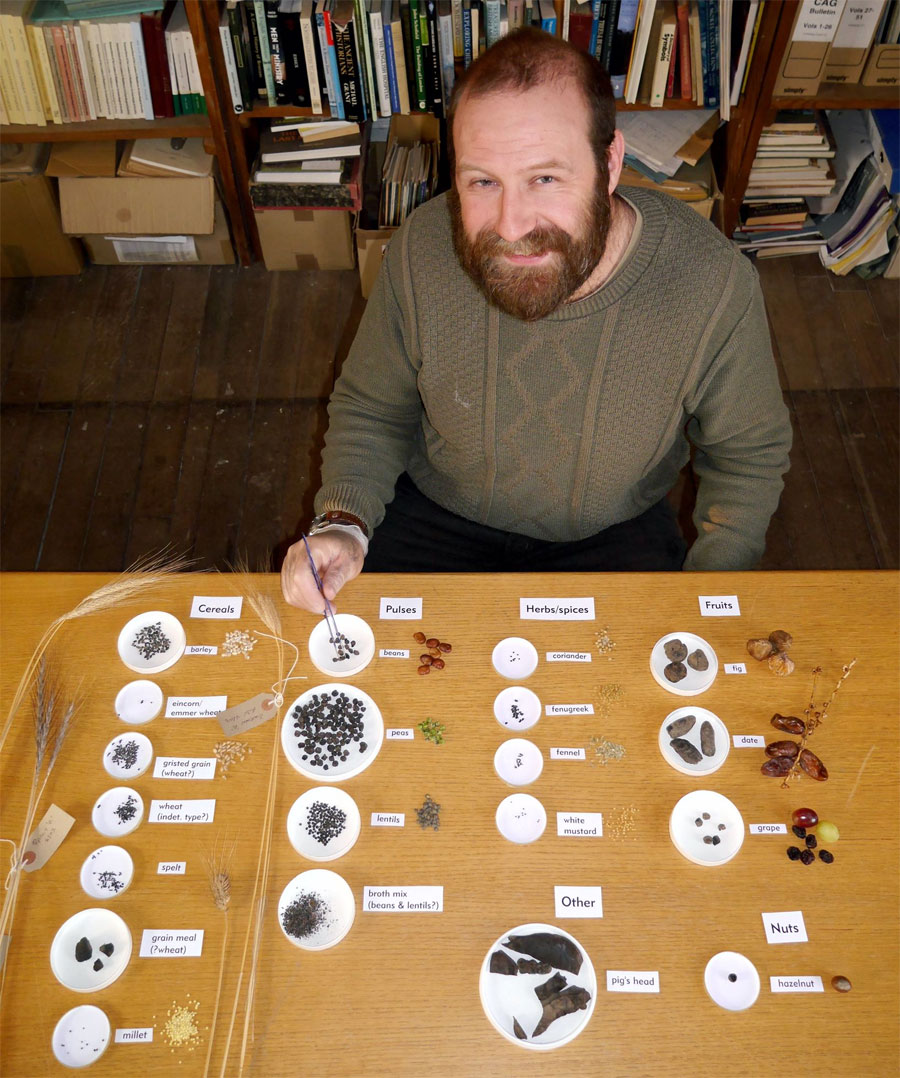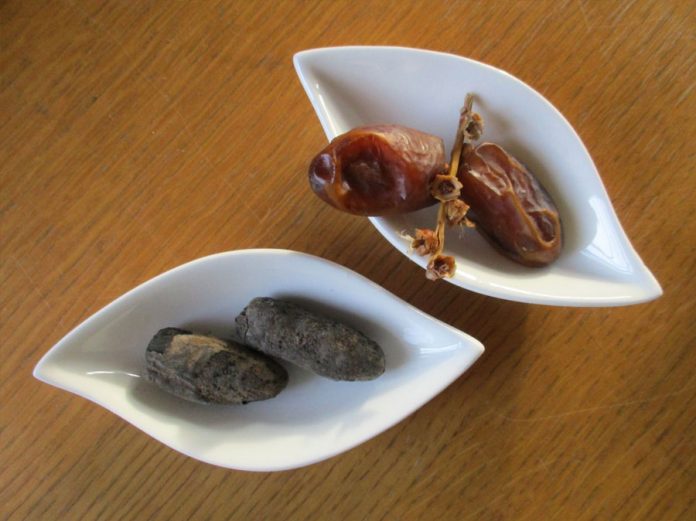In 2014, the Colchester Archaeological Trust (CAT) conducted an excavation within the Williams & Griffin store in the High Street at Colchester. This was a remarkable archaeological site where they uncovered evidence of centuries of occupation, from the 1st-century Roman fortress to the 19th-century iron foundry and the domestic rubbish-pits of adjacent houses. The site produced the amazing ‘Fenwick treasure’. The site also produced another treasure; a remarkable assemblage of Roman foodstuffs.
These remains were preserved by carbonisation, caused by the extreme temperatures within the town when it was destroyed by fire during the Boudican revolt of AD 60 and the Roman towns of St Albans, London and Colchester were burned to the ground.
The assemblage is large and it includes a wide range of foodstuffs. These all derive from one room in the Roman house on the site that Trust archaeologists think was a utility or store room. The Fenwick treasure had also been buried for safekeeping under the floor in this room. The room contained a wooden shelf with a variety of foodstuffs on it as well as a range of Roman pottery vessels – including amphoras which probably also contained foodstuffs, such as wine, fish sauce (garum) and olive oil. Some of the foodstuffs were kept on a wooden platter and in a sackcloth bag on the shelf.
The impressive list of Roman period ingredients consists of grains, pulses, legumes, nuts, fruits, herbs and spices, mostly in quite recognisable forms.
Spelt wheat, gristed grain, emmer wheat, millet, barley, lentils, a possible broth mix, peas, beans, hazelnuts, grapes, figs, dates on the stem, lovage, coriander seeds, fennel seeds, white mustard seeds, and fenugreek have all been identified. There are also some bones from a pig’s head. The discovery of dates on the stem is fascinating. The Romans introduced a number of new foodstuffs to Britain, and some of these would have been imported while others were adopted for cultivation here. The dates in Roman Colchester must have been imported from the Mediterranean providing a snapshot regarding trade and provincial lifestyles.

Samples are being prepared to be sent to the University of Essex where they will be microscopically photographed. Archaeobotanists Val Fryer has been studying the foodstuffs and Lisa Gray is continuing the analysis of the material for our site report.
You can read some tasty Roman recipes of Apicius online at http://penelope.uchicago.edu/Thayer/E/Roman/Texts/Apicius/home.html : these include recipes which use lovage, mustard, coriander seeds, fennel seeds, and dates, for example.
The excavation at the Williams & Griffin store (now Fenwick) was supervised by Trust archaeologist Adam Wightman who is currently writing the site report. The excavation was funded by Fenwick.
Source: The Colchester Archaeologist


